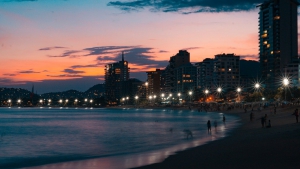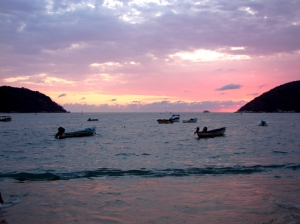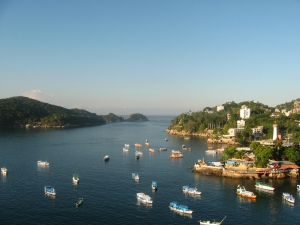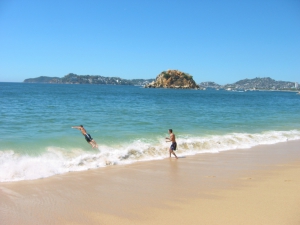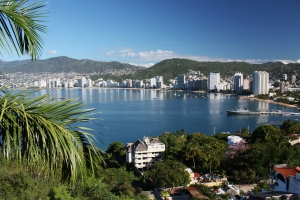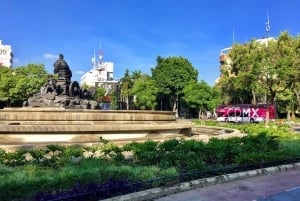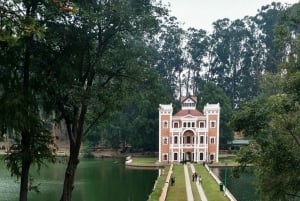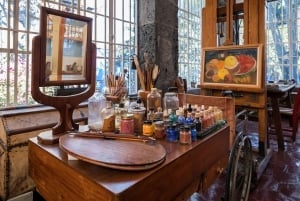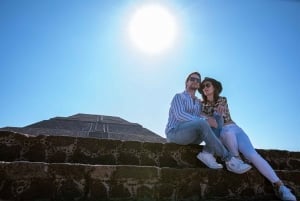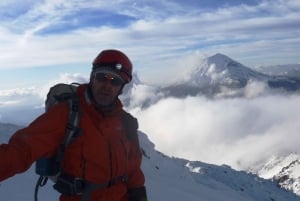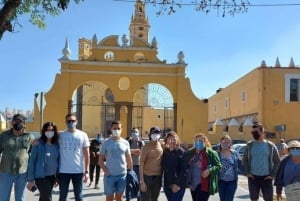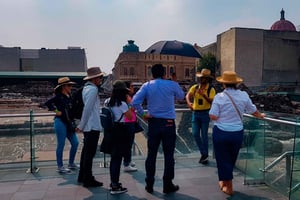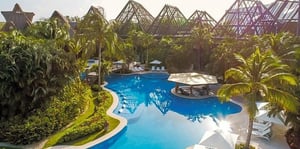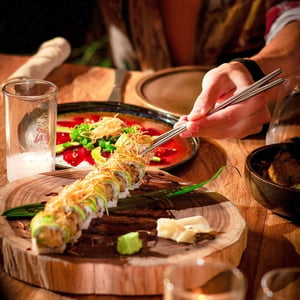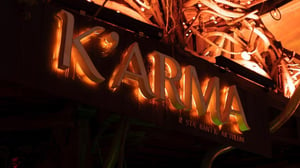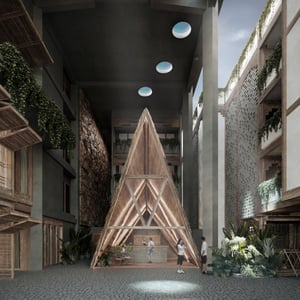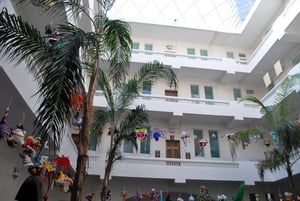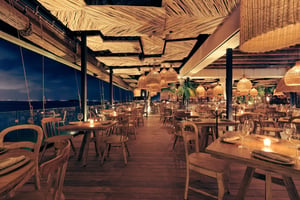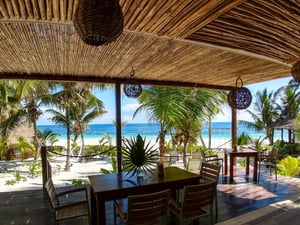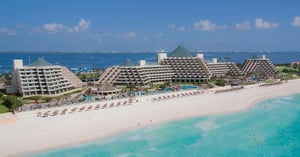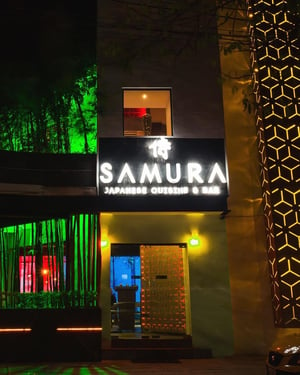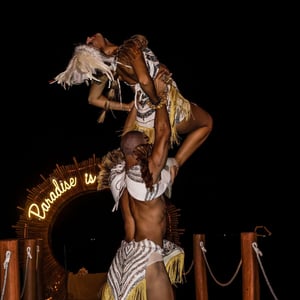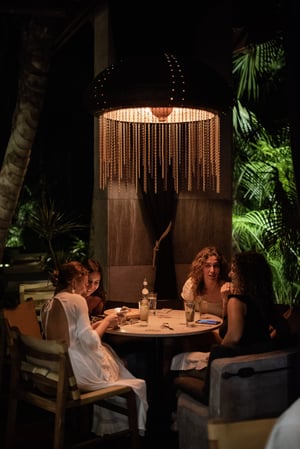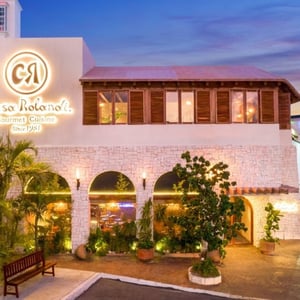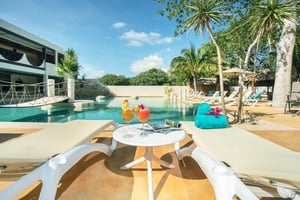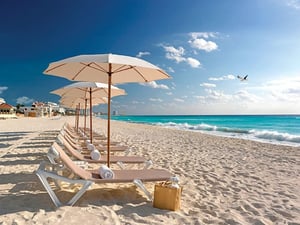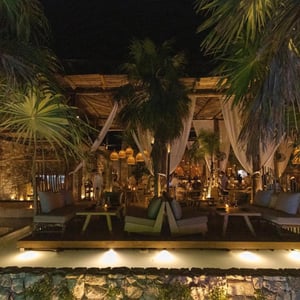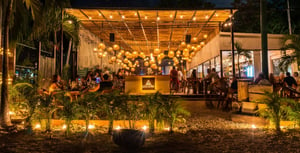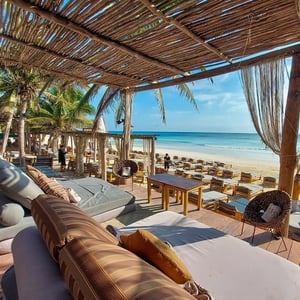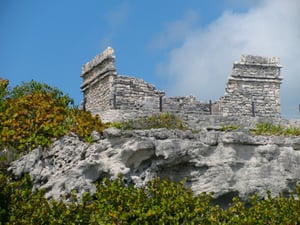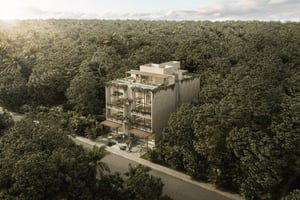Acapulco
You come here for sea, sand and sun, which means sea, sand and sun.
Book Top Experiences and Tours in Mexico:
If youʻre booking your trip to Mexico last minute, we have you covered. Below are some of the top tours and experiences!- Mexico City: Historic Downtown Walking Tour
- Mexico City: Hop-On Hop-Off Bus City Tour
- Chautla's Castle, Lavender Farm, and Valquirico Private Tour
- CDMX: Neighborhoods Contrasts Private Tour
- Mexico City: Frida Kahlo Museum Ticket with Digital Guide
"The La Quebrada rock (Spanish: canyon, gorge) is one of the biggest tourist attractions in Acapulco," says Alberto Ayala, a Mexican who lives near the city. Since 1934, daredevils have been climbing to the top of La Quebrada five times a day and diving into the ocean's 45-metre-deep abyss in front of hundreds of spectators. Not surprisingly, before jumping, they pray in a small chapel below the top of the cliff. Most of the divers come from families where this "sport" has been practised for generations, hence the name "Quebrada Family". Not far from the cliff is a restaurant for tourists, from where you can watch the exploits of the daredevils and the fantastic sunsets. La Querbada is also part of pop culture. In 1963, Elvis Presley shot the film "Fun In Acapulco" here.
In the footsteps of Rambo
Tourists tired of the noisy atmosphere of Acapulco often escape to the Pie De La Cuesta nature reserve located just 10 kilometres from the resort. The park is sand dunes on one side and wild jungle on the other. No wonder that the Americans filmed several versions of "Tarzan" here, and Sylvester Stallone filmed the second part of Rambo's adventures. A boat trip is a must, to see the nests of pelicans and the famous whale rock, where the whales swim up.
The name Acapulco in the language of the local Indians (Nahuatl) meant "a place overgrown with reeds". Since the tourist boom began here 40 years ago, however, reeds have no raison d'être, because every bit of the shore of the picturesque bay has been meticulously developed. The town has been divided into three zones for easy orientation. On the western side is the oldest, traditional Acapulco Nautico with its fishing harbour. The strip of skyscraper hotels at the main avenue La Costera, stretching 11 km along the coast, is Acapulco Dorado (golden), while the villa district at the end of the peninsula is Acapulco Diamante (diamond). Celebrities such as Mr Iglesias (Julio and Enrique), Leonardo DiCaprio, Liza Minnelli and Robert Redford have their residences here.
Shopping, fun and underwater!
The city lies on Acapulco Bay, whose ends are connected by Avenue C.M. Aleman. You can drive the entire city along this street, with the blue bay on one side and a kaleidoscope of neighbourhoods on the other. One of the city's most famous landmarks is the Flamingo Hotel, once bought by actor John Wayne. It was thanks to him that the fashion of the city was born. The area is full of boutiques, nightclubs and restaurants.
Flan, flan, flan and other delicacies
In the oldest quarter, the smell of food cooked on the street in field kitchens tempts. You have to point your finger at the ingredients, but remember to keep an eye on the cooks - one pinch of chilli too many can turn a meal into a throat-burning culinary nightmare. La Familia restaurant (200 José Valdez Arévalo) has the best food in town. Fish soup and pancakes stuffed with pork meat are the highlight. For dessert, order the flan, which is a sort of soft, melt-in-your-mouth pudding, usually caramel or vanilla flavoured, with sultanas or chocolate. The bill is even better than the feast - 70 pesos, or $7. And one more thing: Corona, which is the most famous Mexican beer in the world, is also the worst of a dozen big brands produced in the country. At least, that's what the locals say. No Mexican will ever take a Corona in their mouth. Popular and very good ones include sol, modelo especial and leon.
The Singing Hunchback
Getting around Acapulco is no trouble at all. Apart from the noisy humpback taxis, every step you see flocks of smoky and no less noisy buses. They look like colourful museum exhibits. They stop anywhere to pick up or drop off passengers and, what is important, they are very cheap - you can drive the whole of La Costera for three pesos (60 cents). A solicitor conductor stands in the constantly open doorway and encourages people to get on. There is music blaring from large speakers next to the driver; when the bus starts, the conductor turns up the sound even more.
Where to Sleep and Where to Beach
"Paradise beaches with flour-white sand," we read in the guidebook. On the spot, however, it turns out that the sand is yellowish and coarse. But there is nothing to complain about: the coast is a real treasure of Acapulco. It is worth moving from the hotel to Playa Hornos. There is no concrete here, just palm trees and small pubs. There are also beaches between Playa Hornos and Playa Hornitos, but these are mostly private resorts belonging to American hotel chains (but you can sunbathe on them, there are no closed beaches in Acapulco). To feel like on a deserted island, you have to go to the Zocalo or to the Penisula de las Playas peninsula. It is expensive in Acapulco, fortunately there are hostels. In Acapulco Youth Hostel you can sleep for as little as $20 (dorm room), and in Acapulco Astoria prices start from $60 for a double.



